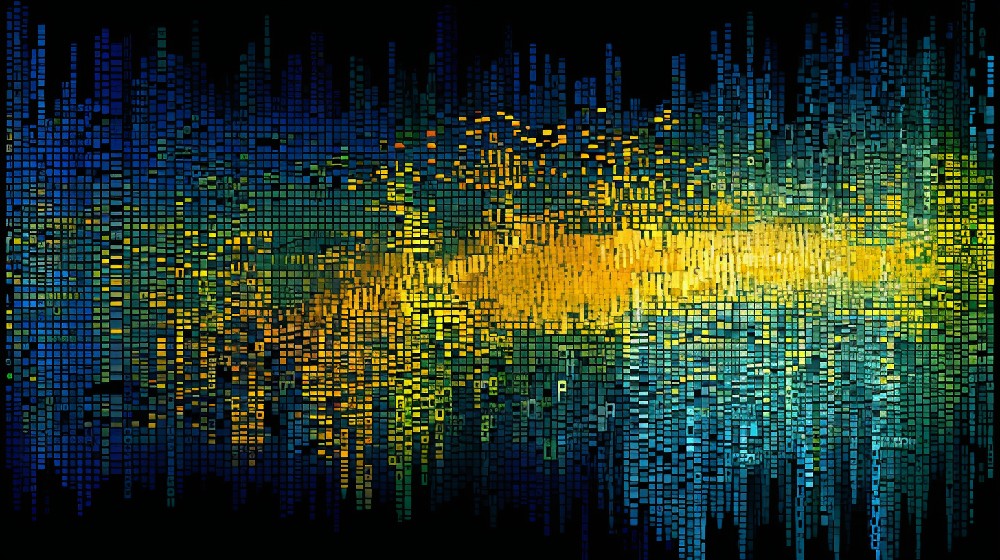The Building Blocks: Variables
At the most fundamental level, a variable can be seen as a storage box in the memory of a computer. This box can hold different types of values, which can be retrieved or changed as needed. The computer uses the variable’s name as an address to access its content.
In programming, we assign values to variables using an equals sign (=). For example, in Python, one might write x = 10, which means we create a box named ‘x’ and put the number 10 in it. If later we assign x = 20, we’re changing the contents of the box ‘x’ to 20, replacing the original value.
However, while this metaphor of a storage box can aid initial understanding, it’s worth noting that variables in programming differ somewhat from those in traditional mathematics. In math, a variable is a symbol that stands for an unknown value, but in programming, a variable stands for a value that can change over time.
The Diversity of Data: Data Types
To efficiently manage these ‘boxes’ or variables, programming languages offer different kinds of data types. While specifics may differ among languages, the most common data types are integers, floating-point numbers (floats), and strings.
Integers
Integers are whole numbers, without a fractional component, which can be either positive or negative. For instance, in Python, we can declare an integer as follows: num = 25. The variable ‘num’ is now an integer variable storing the value 25.
Floats
Floats are numbers that have a decimal point. They are used when we need more precision in calculations, and are called ‘floating-point’ because the decimal point can float throughout the number. Here’s an example of a float variable in Python: pi = 3.14159.
Strings
Strings are sequences of characters and are typically used to store text. In most programming languages, strings are enclosed within quotation marks. For example, greeting = “Hello, world!” is a string variable in Python.
Beyond Storage: Manipulating Data
Understanding variables and data types is only part of the equation. To harness the full power of these tools, we must learn how to manipulate them. Thankfully, programming languages provide various operators for this purpose.
For numerical data types (integers and floats), standard mathematical operations can be performed, like addition, subtraction, multiplication, and division. For instance, given two integer variables a = 10 and b = 2, we can add them using the plus (+) operator: sum = a + b. The new variable ‘sum’ now holds the value 12.
In contrast, strings are manipulated using different operations. A common operation is concatenation, where two strings are combined end-to-end. For example, if string1 = “Hello, ” and string2 = “world!”, the operation string3 = string1 + string2 will result in string3 being “Hello, world!”.
Discussion
Variables and data types lie at the heart of programming, forming the bedrock upon which more complex algorithms and applications are built. Despite their seemingly simple nature, they possess immense potential and should never be underestimated. By delving into these foundational concepts, students can unlock the true power of computer science and open up a world of possibilities.
Just as a musician must master the basics of their instrument before composing a symphony, understanding variables and data types is crucial for any aspiring programmer. These concepts serve as the building blocks, allowing programmers to store and manipulate data in a structured manner. A variable is essentially a named container that holds a value, and its type determines the nature of that value. From numbers to text to more specialized data structures, the choice of data type has a profound impact on how information is processed and utilized within a program.
By grasping the intricacies of variables and data types, programmers gain the ability to craft sophisticated programs that tackle complex problems head-on. Consider a scenario where you need to develop a weather application that analyzes historical data to predict future weather patterns. To accomplish this task, you would need variables to store data such as temperature, humidity, wind speed, and precipitation. Each of these variables would have a specific data type, ensuring that the program can correctly handle and manipulate the corresponding information.
Moreover, understanding data types enables programmers to optimize their code for efficiency and memory management. Different data types have different storage requirements and computational characteristics. For example, using an integer data type to store whole numbers is typically more efficient than using a floating-point data type, which can represent decimal values with higher precision but requires more memory. By selecting the appropriate data type for a given situation, programmers can optimize their programs for speed and resource usage.
Beyond the practical applications, variables and data types serve as a gateway to creative problem-solving and algorithm design. Armed with a deep understanding of these concepts, programmers can devise elegant solutions to intricate puzzles and create innovative algorithms that revolutionize various fields. From machine learning algorithms that analyze massive datasets to cryptographic algorithms that secure sensitive information, variables and data types underpin the very fabric of modern technology.
In conclusion, variables and data types may seem like simple elements in the vast realm of programming, but they possess immense potential. Mastery of these fundamental concepts is essential for any programmer aiming to construct complex and efficient programs. By embracing variables and data types, students embark on a journey that equips them with the tools to tackle diverse challenges, unlock innovation, and shape the future of technology.
A Final Word
Always remember, regardless of how complex the problem, the solution often lies in the skilled application of these basic concepts. Explore them, master them, and then push their limits. The world of programming is full of endless possibilities, and these are your first steps in unveiling them.
Good luck on your journey, and never stop learning! Remember, the core of computer science is not just about understanding machines, but also about enhancing your problem-solving skills and fostering your creative thinking. As you dive deeper into the field, you’ll discover that with a robust understanding of variables and data types, you’re well-equipped to tackle the challenges that lie ahead.
In subsequent articles, we’ll delve further into more advanced topics such as data structures, algorithms, and object-oriented programming. These will build upon the foundations laid in this article, further empowering your programming skills and understanding of computer science. Until then, continue experimenting with and exploring these basic elements – your journey is just beginning.





